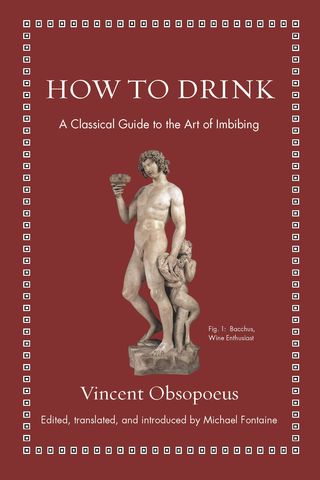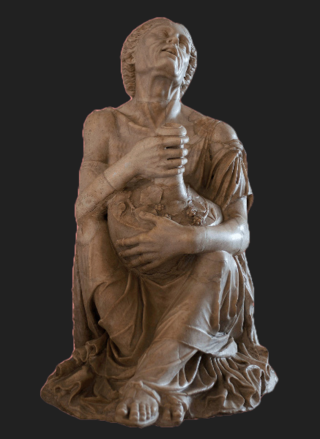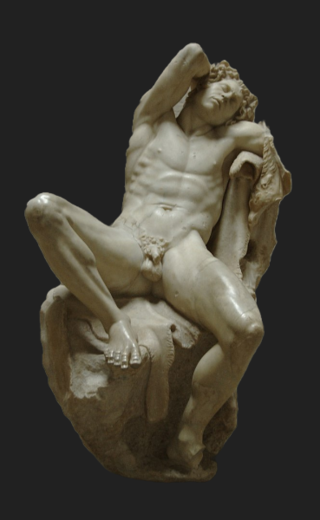Alcoholism
Yes, There Is an Art to Drinking Alcohol
A rediscovered treatise offers a different way to gain control.
Posted April 14, 2020
This post has been adapted from the new book How to Drink: a classical guide to the art of imbibing. Click here to hear me discuss the book with Dr. Raj Persaud of the UK's Royal College of Psychiatrists.

America has a drinking problem. Shots. Chugging. Contests. Frat culture. Bro culture. Puking. Passing out. Driving home.
And, the experts say, it's getting worse. How did we get here?
The traditional name for self-destructive drunkenness is alcoholism. The latest name is Alcohol Use Disorder (AUD). According to the National Institute on Alcohol Abuse and Alcoholism, 16 million people in the United States—more than six percent of us—have it. We're told that more than 90% of them receive no treatment.
Temperance failed, Prohibition failed, and here we are.
And it’s not just America. Binge culture is spreading worldwide. Alcohol consumption has quadrupled in Japan since 1960, with businessmen passing out on the streets of Tokyo. Drinking in South Korea is off the charts, with the average person taking 14 shots of hard liquor a week.
Many are calling it all an American import. But that isn’t quite right.
People have always gotten drunk and suffered the consequences. In ancient Rome, you were supposed to water your wine down to a third of its strength and control yourself.

Not everyone did. “In enjoying the freedom that men do,” remarked Seneca, the Stoic philosopher, "Women are now enjoying men’s problems, too. They stay out late at night no less, they drink no less, they challenge men to wrestling and drinking alcohol, and out of equally upset stomachs, they spit and barf all the wine back up."
With a few exceptions, though, binge and bro culture were largely alien to ancient Greece and Rome 2,000 years ago. The idea that hardcore drinking is a mark of he-man prowess first emerged in Germany in the 15th century and spread like a virus in the 16th.
Why? Because the crusades were over, the economy was changing, and the knights of the medieval world no longer had any purpose in their lives. They turned to wine to fill the void.
It sounds like a lot like the opioid crisis gripping America today.
Jousting gave way to drinking contests. And with Germany’s vineyards four times larger than today—and per capita consumption six times higher—the pressure to indulge was ample.
In the winelands of this 16th-century world, a man named Vincent Obsopoeus could see it all.

As the principal of an elite high school, Obsopoeus—his name rhymes with “Job? So pay us!!!”—witnessed the birth of a poisonous new culture of bingeing, hazing, peer pressure, and competitive drinking, where the goal was to make the other person pass out. (And yes, women played too.)
Inspired by Ovid’s ancient Art of Love, he lifted his pen to compose an Art of Drinking—a how-to manual for the “art” of drinking responsibly, sustainably, and with discrimination.
He wanted young men to clean up their act and get married. The result is an antidote to chaos and a timeless classic.
What's his secret?
In America today, the opposite of sleeping around is not celibacy but monogamy.
In The Art of Drinking, Obsopoeus recommends an analogous attitude toward alcohol. For him, moderation, not abstinence, is the key to lasting sobriety. If you're familiar only with the Alcoholics Anonymous approach to managing addiction, you'll be surprised.
Even more startling, Obsopoeus also says that drinking to excess on occasion is okay. He even reveals his secret to winning those competitive drinking games, citing extensive personal experience.
And that's not all. Obsopoeus also teaches us how to win friends and impress others at social gatherings. He offers clear advice on how to give a proper toast and how to make conversation when we're nervous or intimidated.
Obsopoeus takes special aim at frat parties and toxic masculinity, offering actionable advice to resist the pressure to join in when it feels overwhelming.
Five hundred years after it was written, Obsopoeus' book is packed with sensible advice for college students — but not just them. If he's right, his algorithms and techniques will help readers of all ages avoid bingeing and the chaos that goes with it.
Do they work? Obsopoeus swears his method does.
It sounds risky.
But given the failure of so much else, it might be worth a shot.
References
Obsopoeus, V. (2020). How to Drink: A Classical Guide to the Art of Imbibing. Edited, translated, and introduced by Michael Fontaine. United States: Princeton University Press.
National Institute on Alcohol Abuse and Alcoholism website. 2020. “Alcohol Use Disorder.” https://www.niaaa.nih.gov/alcohol-health/overview-alcohol-consumption/alcohol-use-disorders. Accessed April 13, 2020.
Levine, Harry G. 1978. “The Discovery of Addiction: Changing Conceptions of Habitual Drunkenness in America.” Journal of Studies on Alcohol 15:493-506.




